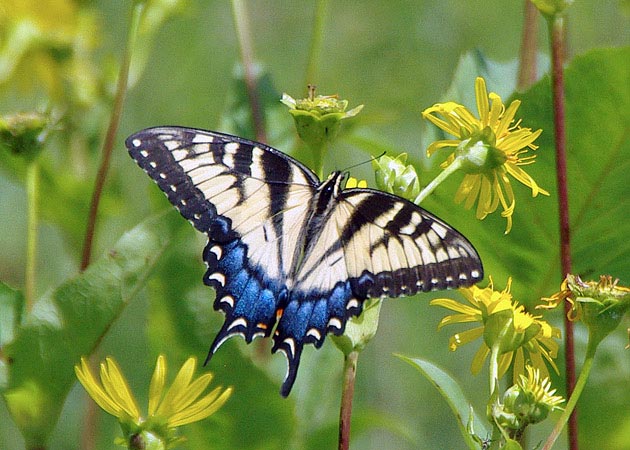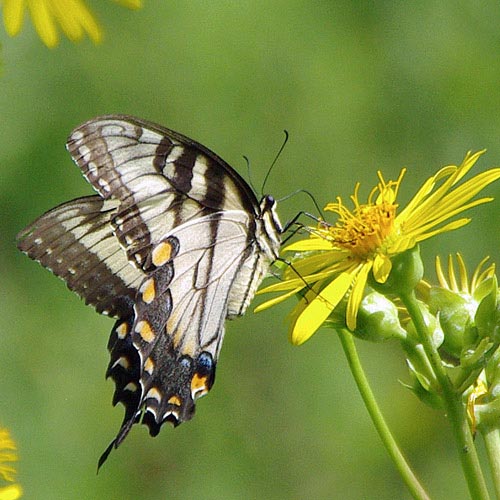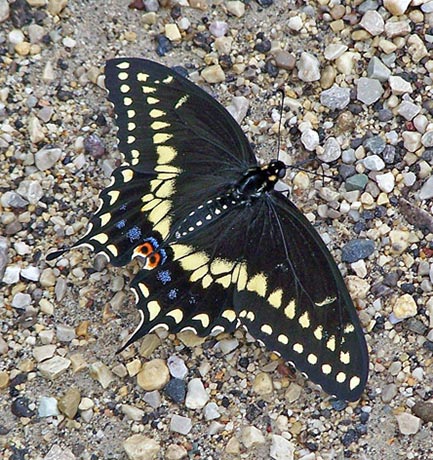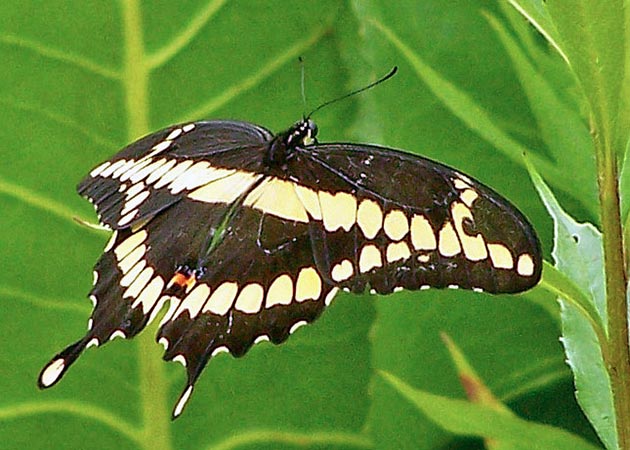Salutations, BugFans,
The BugLady hopes that everyone else here in God’s Country is enjoying the magical second brood of Tiger Swallowtails. The first brood, in June, was nothing to write home about, but apparently, they got the job done. Tiger swallowtails are everywhere, soaring and looping through the air, complementing the grassland flowers, gathering around puddles for minerals, and unfortunately, playing “Chicken” with cars.

[metaslider id=4798]
Tiger Swallowtails
Tiger swallowtails are BIG butterflies. Canary-sized butterflies, with wingspreads approaching 5½”. The males are tiger-striped. Some of the females share that yellow and black coloration, and a tiger with an extra dollop of blue on the hind wings is likely to be a female. There are also dark morph females (commonly misidentified as Black swallowtails, but Black swallowtails are noticeably smaller, “trimmer,” and faster-flying than the dark tigers). Dark female tigers are said to be mimicking pipevine swallowtails, a southern species that is poisonous because its caterpillar host plant (pipevine) is poisonous—a mimicry that is useless here because Pipevine swallowtails are uncommon.

Tiger Swallowtails were featured (along with Black Swallowtails) in a BOTW back in April of 2008. The other swallowtail in the neighborhood, the Giant swallowtail, is a regular southern visitor that has also had its own BOTW (Reruns available at the Riveredge and the UWM Field Station websites).


Some butterflies produce a single brood here in the north, while others have enough time to produce two generations. Caterpillars of the first brood spend a short time as a pupa in a chrysalis before emerging as an adult during the same summer. Their offspring overwinter as pupae. Monarchs may go through three generations here, but only the late summer brood (called Gen 5 because they are the fifth generation removed from the wintering sites in the mountains of Mexico) will live long enough to travel south and begin a return journey the next spring (which is why they are the only generation that is “tagged” for migration studies).
If there is a poster child for “Perfect,” it’s a Tiger swallowtail. Stop what you’re doing, go outside, and enjoy the show—it’s almost over.
The Bug Lady